Building for life in the Cotswolds
Despite Brexit and Stamp Duty jitters, life goes on in this sought-after area.
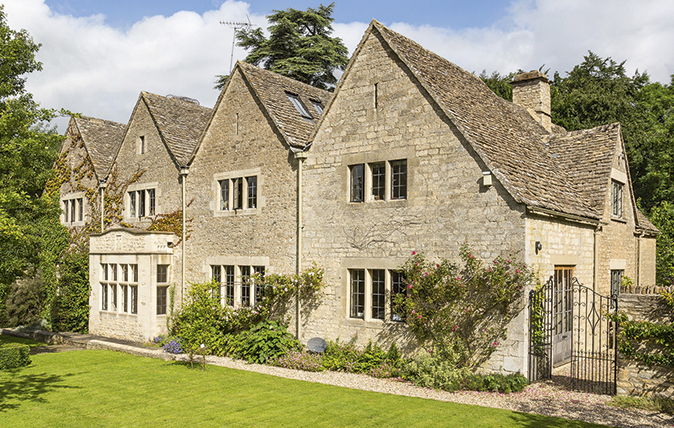

Whenever the dreaded ‘uncertainty’ threatens to derail the smooth workings of the country-house market, there’s usually a crumb or two of comfort to be gleaned in the Cotswolds. Happily, that still appears to be the case. Although recognising that Brexit has resulted in a ‘patchy’ market across the country as a whole, in the past few weeks, Atty Beor-Roberts of Knight Frank in Cirencester has seen an encouraging number of deals being done on classic family houses in Oxfordshire and Gloucestershire.
‘Most have involved London or regional buyers who have picked themselves up, dusted themselves down, decided they still have a life to lead, and should just get on with it,’ he reports. For example, on May 18, we launched two houses in need of complete modernisation, The Grange and Manor House in the village of Little Tew, near Chipping norton, Oxfordshire, at guide prices of £2.75 million and £3.6 million respectively. Both are now under offer, having attracted more than 100 viewings between them.’
Houses sold include The Garden House at Westonbirt, Gloucestershire —built by the Arts-and-Crafts architect Norman Jewson in 1939—which exchanged and completed in June at a guide price of £4m; Shipton Manor at Shipton-on-Cherwell, Oxfordshire, sold this month against a guide price of £6.5m; and Mulberry House, a new Cotswold stone house set in 15 acres of land on Leckhampton Hill near Cheltenham, which launched in May and found a buyer at a guide price of £4.25m.
‘People buying in the Cotswolds are mainly looking for family houses where they expect to live for at least 10–15 years, with children’s schooling the prime motivation. Having made their decision to move to the Cotswolds, where good houses are always in short supply, such buyers are less likely to be put off by unexpected events’, Mr Beor-Roberts explains.
Although the wool trade was largely responsible for the prosperity of the Cotswolds, the region’s character was defined by the abundance of building stone found throughout the area, which has been used since medieval times by local craftsmen, often to build entire villages.
Knight Frank (01285 659771) are handling the sale of another significant Arts-and-Crafts house, Fosse Hill (Fig 1) in the rural village of Coates, Gloucestershire, whose name derives from the sheep pens (‘cotes’) that once littered the area and gave the Cotswold region its name. The agents quote a guide price of £3.25m for Fosse Hill, built by Jewson in the early 1920s and remodelled and renovated by its current owners during the past 12 years.
Approached through electric gates along a lovely tree-lined drive, the roomy, 6,085sq ft house, set in more than eight acres of immaculate gardens, grounds and paddocks, boasts a wealth of natural materials, including wooden and limestone flooring, brick and stone fireplaces, exposed timbers and stone-mullioned windows.
Sign up for the Country Life Newsletter
Exquisite houses, the beauty of Nature, and how to get the most from your life, straight to your inbox.
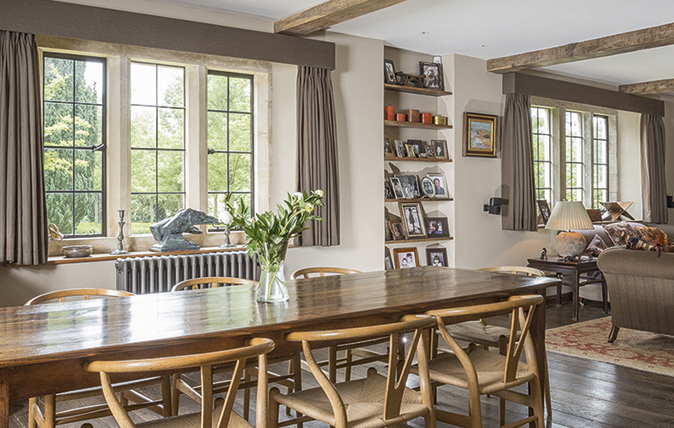
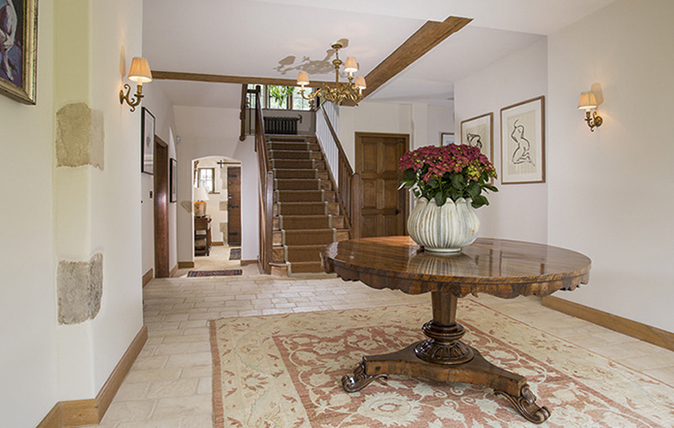
Accommodation on three floors (Fig 2) includes three main reception rooms, six bedrooms and three bathrooms. Worthy of note are the double-aspect drawing room over-looking the garden and the splendid kitchen/breakfast/living room, in which several small rooms have been merged to form one large, open-plan, family living area.
‘Even the Cotswolds hasn’t been immune to the effects of Brexit or, more importantly, the punishing new Stamp Duty regime that has seriously affected the upper end of the country-house market,’ says Sam Butler of Cotswold agents Butler Sherborn, whose firm celebrates its 25th anniversary in September. ‘Nevertheless, there are buyers out there and, if they see what they want, they are prepared to go for it and the deals tend to stick.’
He adds: ‘Although there’s not a huge choice of houses to buy at the moment, so far, we’ve managed to replace ones that have sold with another of similar calibre.’
Having found a buyer at a guide price of £2.25m for Barn House at Bibury near Cirencester, Gloucestershire—a former stone barn, built in about 1800, converted in 1923 and set in 8½ acres on the edge of the village once described by William Morris as ‘the most beautiful in England’—Butler Sherborn (01285 883740) are offering one of Bibury’s landmark houses, The Walled Garden (Fig 3), at a guide price of £2.85m.
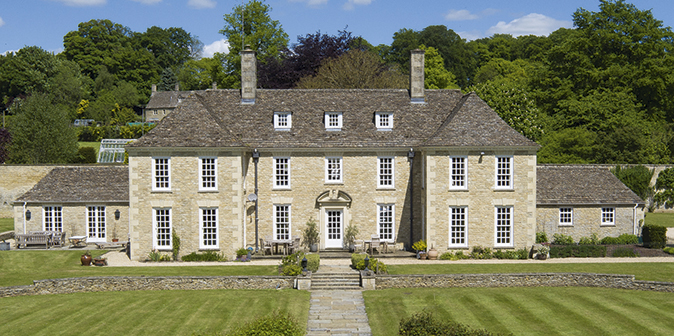
Built by a well-known local builder between 1986 and 1988 for its present owners, Andrew and Anne Johnston, former owners of the prestigious Bibury Court Hotel (now a private house), The Walled Garden is a hugely impressive, Georgian-style house, hidden away in a one-acre walled-garden setting close to the former hotel and the village church. Its 5,630sq ft of light and well-proportioned accommodation is arranged over three floors and includes two main reception rooms, a garden room, a study, a kitchen/ breakfast room, five/six bedrooms and three bathrooms.
Also in Gloucestershire and fresh to the market this week, at a guide price of £2.95m through Savills in Stow-on-the-Wold (01451 832832), comes the delightful Bobble Barn Farmhouse (Fig 4), with just under 40 acres of land overlooking the Windrush valley, at Little rissing- ton, five miles from Stow.
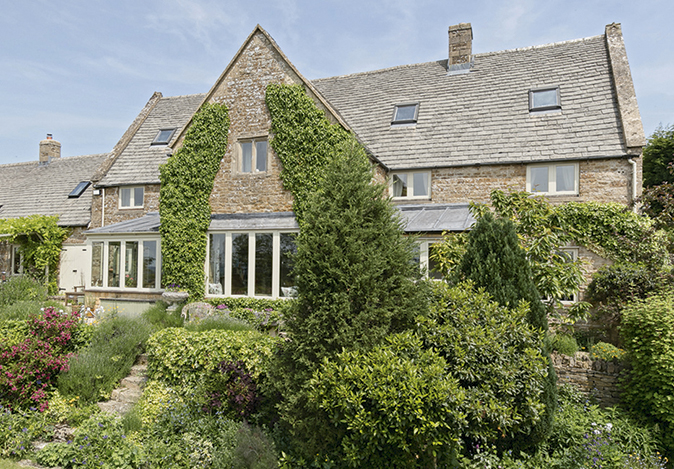
Originally a threshing barn with adjoining stables, Bobble Barn Farmhouse, listed Grade II, dates from the late 1700s and was first converted in 1986, then extended and refurbished by the current owners in 2001.
Surrounded by established gardens laid out as a series of ‘rooms’, the house stands in the centre of its land and works equally well as a small, manageable stud farm or as a country house with useful amenity land, the agents say. Its 5,710sq ft of versatile, rustic accommodation includes reception and inner halls, three main reception rooms, a study, a kitchen/ breakfast room, a garden room, five bedrooms and three bath/ shower rooms.
The equestrian facilities are second to none and comprise an American- style barn with 16 stables, a pole barn, stores and lofts, an outdoor manège and a testing, 4½-furlong, uphill, all-weather gallop.
-
 380 acres and 90 bedrooms on the £25m private island being sold by one of Britain's top music producers
380 acres and 90 bedrooms on the £25m private island being sold by one of Britain's top music producersStormzy, Rihanna and the Rolling Stones are just a part of the story at Osea Island, a dot on the map in the seas off Essex.
By Lotte Brundle Published
-
 'A delicious chance to step back in time and bask in the best of Britain': An insider's guide to The Season
'A delicious chance to step back in time and bask in the best of Britain': An insider's guide to The SeasonHere's how to navigate this summer's top events in style, from those who know best.
By Madeleine Silver Published
